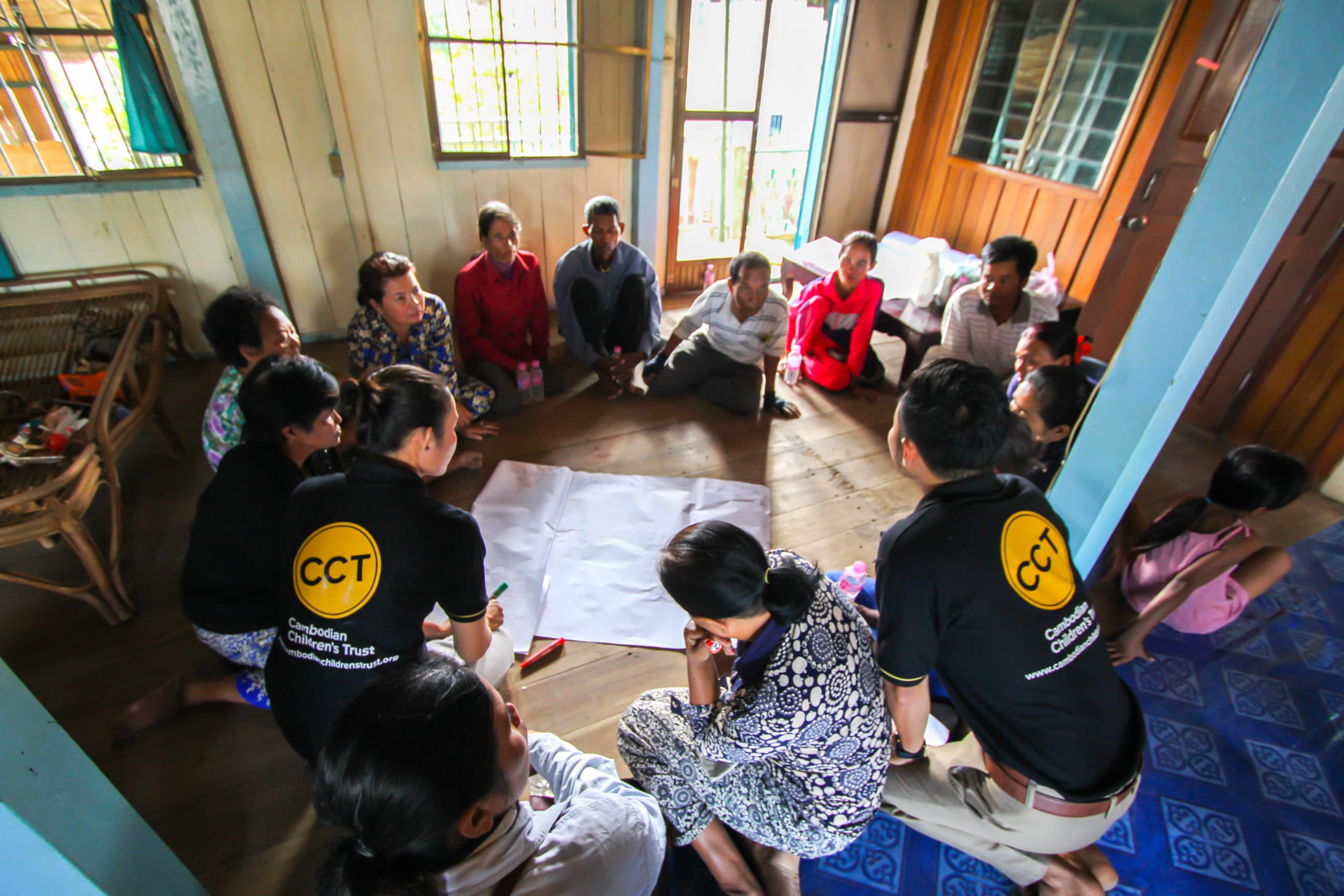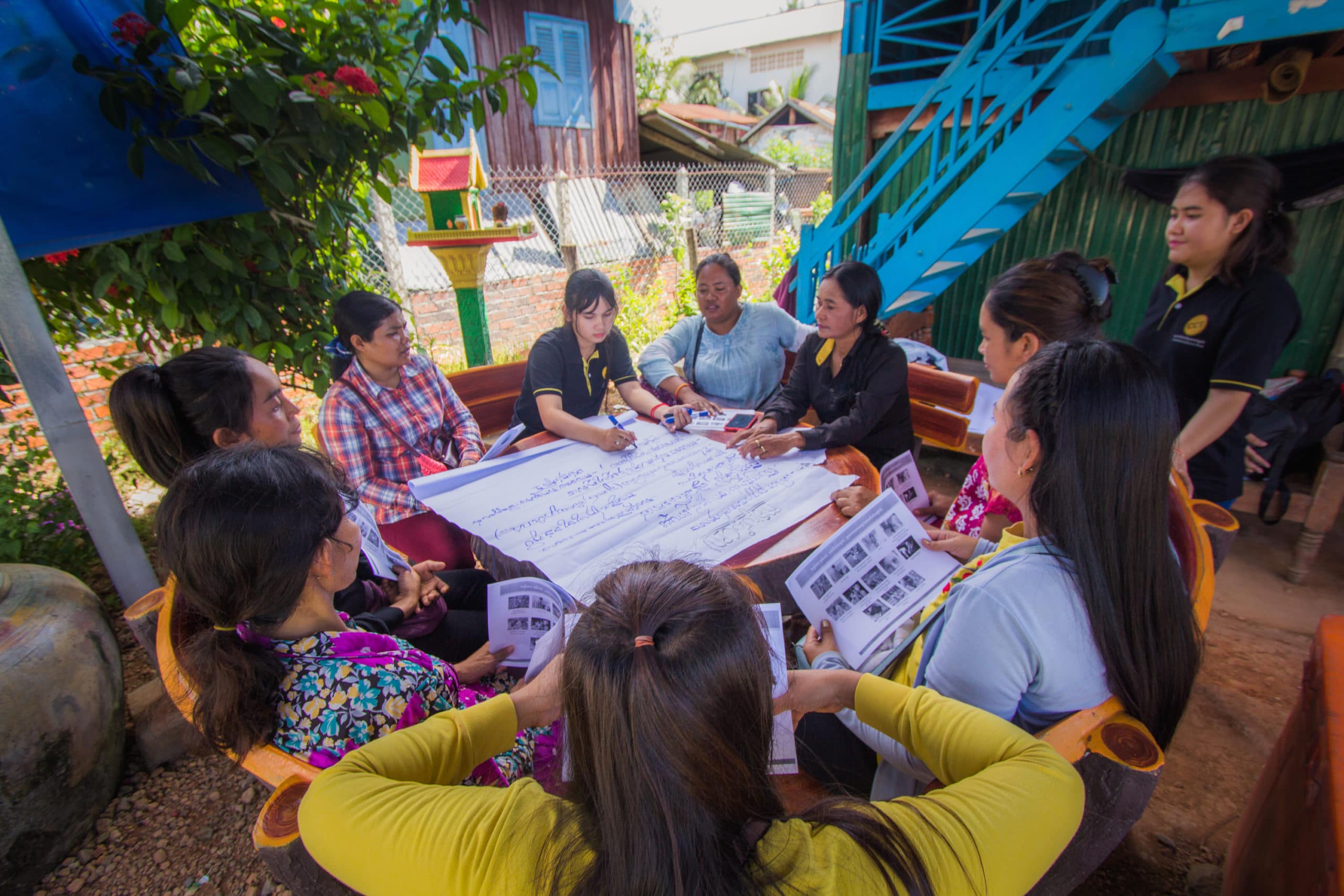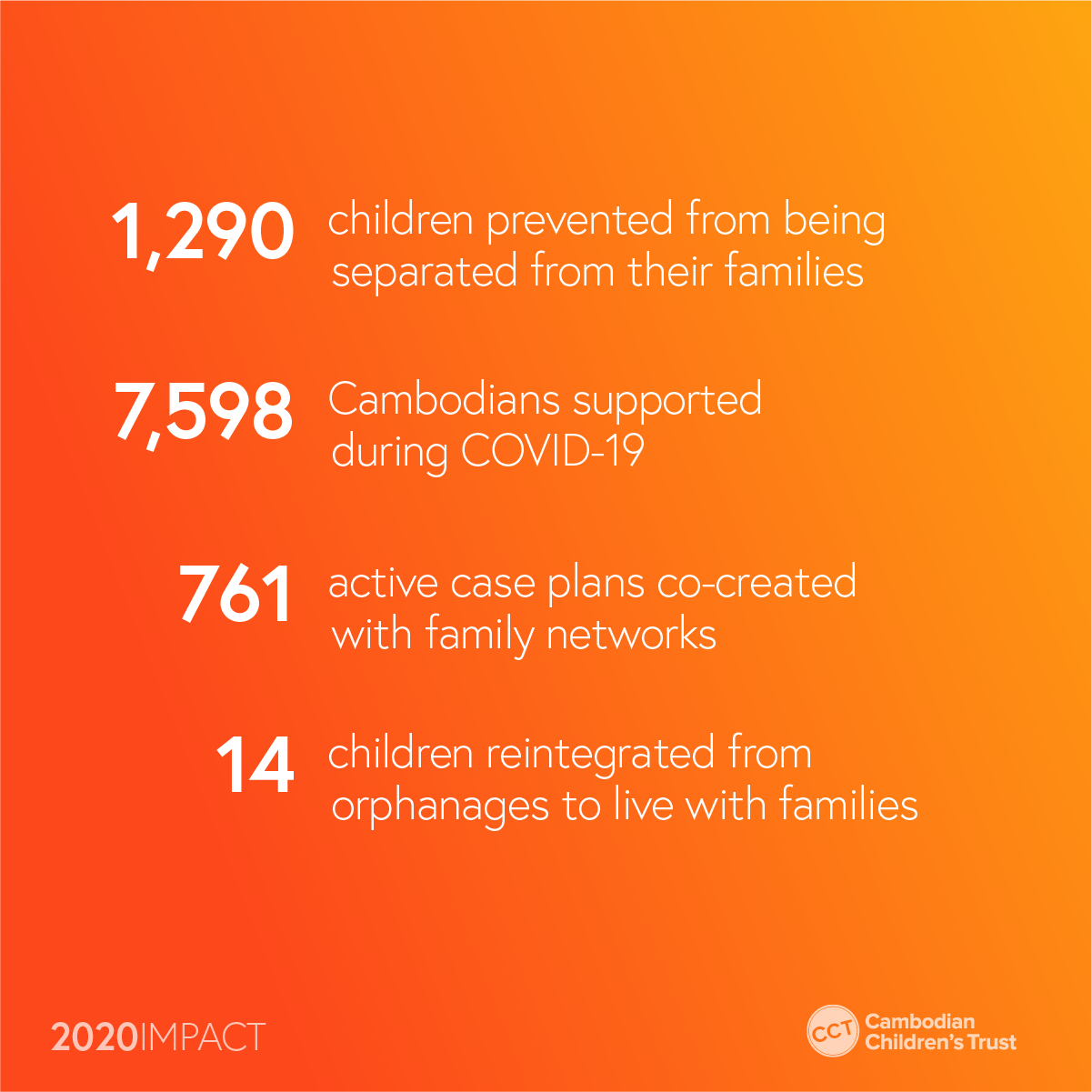Should I sponsor a child? If that’s a question you’ve been asking yourself, you’re in the right place.
There’s no doubt the idea of sponsoring a child is appealing. It gives people a personal connection to where their money is going and puts a face and name to the cause they’re supporting. Being connected to one child and receiving their letters and correspondence tends to make it feel more real, offering a gratifying reward for donors’ selfless generosity.
However, there are some untended problems that can come from child sponsorship that donors are mostly unaware of.
Cambodian Children’s Trust (CCT) was founded in 2007 after its co-founders, Tara Winkler and Pon Jedtha, helped 14 children to escape from a corrupt orphanage. CCT then operated as an orphanage until Tara Winkler and Pon Jedtha realised how harmful institutional care is to children, no matter how therapeutic the orphanage is. For the first several years of operation, CCT used a child sponsorship program to raise funds. CCT donors would sponsor a child and receive biannual letters from their sponsored child. This was a successful fundraising strategy and still used by many children’s charities across the world. It wasn’t until the CCT team noticed that some of the children had formed unusual bonds with their sponsors, did they start to reconsider whether child sponsorship was causing harm to the children.
Tara Winkler recalls younger children asking daily, “When is my sponsor coming to visit me?”
The children would constantly talk about how much they missed and loved their sponsors, even though they may have never met in real life. Tara and Jedtha grew concerned that the relationships the children had developed with their sponsors wasn’t healthy and was exacerbating attachment disorders that are commonplace among children in orphanages.
At the same time, CCT’s work was undergoing a complete overhaul. CCT had begun developing its innovative Village Hive model, which is holistic, community-led and empowers families to create change in their own lives. CCT was on its way to becoming a leader in the care reform movement in Cambodia, yet none of this work was being communicated to child sponsorship donors who were just receiving updates on one child. As such, CCT donors were missing out on gaining a true understanding of the vast scope of work they were supporting and the wider impact of their donations.
CCT also realised that it wasn’t ethical to require children to assist with fundraising efforts. Putting the responsibility on children to maintain regular correspondence with donors is a type of work, undoubtedly giving children the impression that their support was conditional upon the letters they wrote. It should not be the job of children to fundraise, that is a responsibility that must solely belong to adults within CCT.
CCT came to realise that there was more harm than good associated with child sponsorship and made the decision to move away from this lucrative fundraising approach. There was a risk that they’d lose donors over it, but the CCT team hoped that by showing donors the impressive breadth of work they were actually supporting, and the impact of this work, that donors would agree to continue their support without having a sponsored child. And that is exactly what happened.
The relationship between child and sponsor is a confusing one for young children. Early interactions shape the wiring in children’s brains and establish patterns for how they will develop relationships as they grow older. Children who are involved in child sponsorship programs are often already struggling with attachment disorders and the child-sponsor relationship can exacerbate those behavioural problems.
Child sponsorship overlooks the fact that the children in orphanages almost always have a family. This false narrative that paints children as orphans has resulted in the proliferation of orphanages across the developing world. 80% of children in orphanages have living parents and almost all have living relatives. Vulnerable children don’t need new families. What they do need is permanent and ongoing support connected to their family of origin. This is what helps them to reach their full potential in life.
Children will often express feelings of missing their sponsors, even though they have never met in person or spent very limited time together. They are often preoccupied with thoughts about when their sponsor will come to visit and are not able to make sense of why there’s someone who is funding their life, but not actually a part of their life. In the event that the sponsor has to withdraw support, the children will often perceive the cancelled sponsorship as rejection, and internalise the abandonment as something they have done wrong or that they are no longer worthy of support.
Child sponsorship is rooted in problematic power dynamics. Take the practice of letter-writing between sponsor and child as an example. There’s nothing like writing a regular thank-you letter to remind you of your place. In reality, the knowledge and wisdom of how to protect and support children lies not with foreigners but within local community.
Supporting one child in one family is not enough to break the cycle of poverty as they will become the sole breadwinner for their entire family who was left behind. The best way to help children is to change the system that creates poverty. By creating sustainable social protection systems that support the whole family to escape poverty together, we can prevent children from needing to be sponsored in the first place.
People who sponsor a child in a country like Cambodia have the best of intentions. They want to use what they have to help vulnerable children, which is admirable. However, there is a better way to help children break the intergenerational cycle of poverty. The answer lies in supporting families.
When whole families and communities have tools that move them out of dependence and towards self-sufficiency, they can work together to lift themselves out of poverty. Vulnerable families are more than capable of making the permanent changes needed to change their circumstances, they just need the right support.
CCT has been working in child protection in Cambodia for over 13 years. Our holistic Village Hive model supports the ongoing health and wellbeing of whole families and communities.
It brings vital services, such as healthcare, counselling, crisis intervention, access to education, financial literacy coaching and income generation initiatives, into communities so that children and their families have the support they need to thrive.
Science tells us that you cannot help children without helping the adults in their lives too. It is vital to develop programs and initiatives that lead to active skill-building and empowerment within the family unit. One of the holistic approaches in CCT’s Village Hive model is our Family Finance Program. This initiative partners with vulnerable families and empowers them to take control of their own lives and ultimately achieve financial freedom.

Our experience on the ground in Cambodia is that co-creation of programs with families and communities that focus on self-determination is the most important factor for children to break free from the cycle of poverty. Putting families in the driving seat and acknowledging that they are the experts in their children’s lives, empowers them to shape their own futures.
Minear was a single mother in crisis. She needed basic support to help her and her young family reunite and thrive after years of poverty. Through holistic support from existing networks within her local community, she begins a plan for her family’s sustainable future together.
Before you part with your hard-earned money, make sure you do your research. Don’t just blindly offer support to a charity with a charismatic founder. Make sure you gain a proper understanding of the work you’re supporting and its impact.
Make sure you’re supporting an organisation that helps children escape poverty in an ethical and sustainable way and which empowers whole families to stay together and thrive together.

CCT’s Village Hive is built on a foundation of collaborative community engagements with the goal of eliminating dependence on charity and restoring local sovereignty.
The Village Hive Project is building a public social protection system in Cambodia, run by local communities in Cambodia. Through an upstream approach, it dismantles the root causes of poverty and raises the standard of living for entire communities.
By joining The Hive, your monthly donation will power a Village Hive and reach hundreds of children and families in crisis. Check out our 2022 Impact report to see how your donation will transform lives and help break the cycle of poverty by breaking the cycle of charity.

By supporting a community and giving families the tools and resources to help themselves, your donation becomes part of a sustainable future for families in Cambodia.
Donating to help protect vulnerable children across the world and make poverty history is an admirable endeavour. However, we must always make sure our efforts are not inadvertently creating more harm than good Learn more about CCT’s ‘upstream approach’ to child protection and how you can give families the power to create their own sustainable futures, ending the intergenerational cycle of poverty for good.